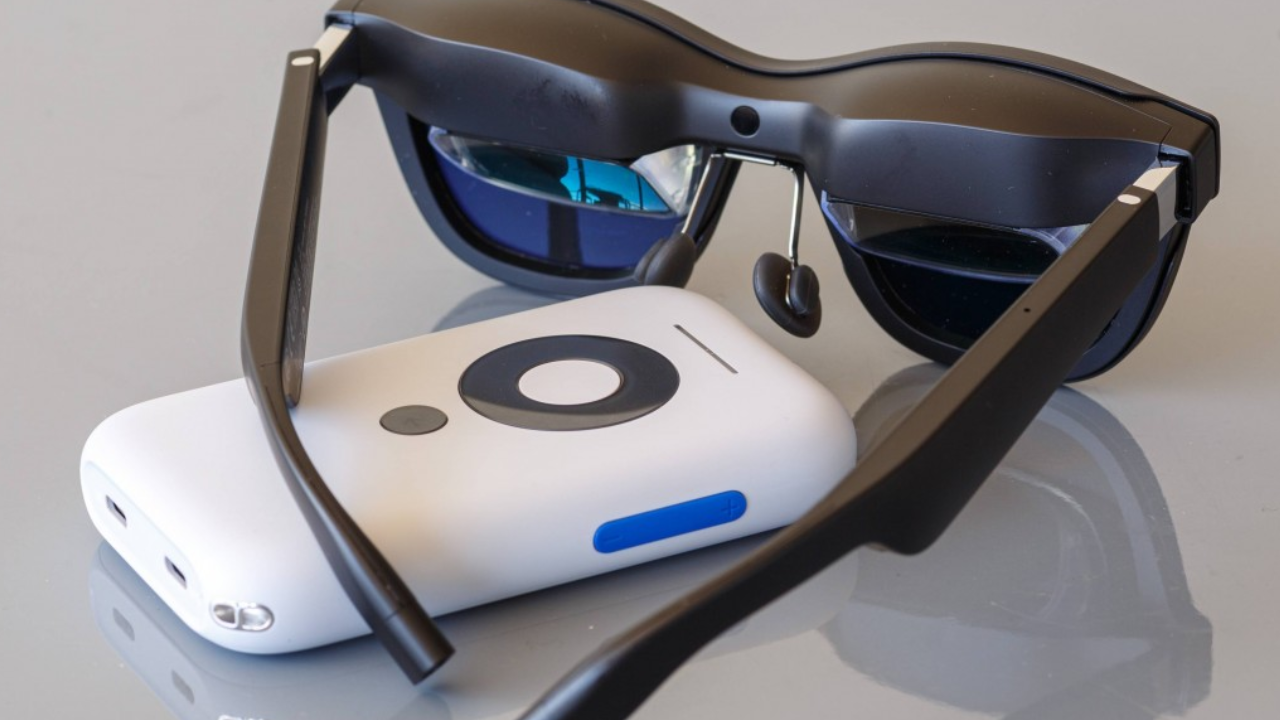“Air AR Glasses” promises to be a wearable that is lightweight and easy to use, adding a new level to augmented reality. These glasses are a technological trailblazer since they smoothly incorporate augmented visuals into the user’s environment, improving everyday interactions. They raise the bar for augmented reality wearable ergonomics by emphasizing comfort and airiness.
Air AR Glasses provide users with a natural and unobtrusive method to obtain information, traverse environments, and interact with digital material thanks to their sophisticated sensors and stylish appearance. These air ar glasses aim to elevate user experiences by making augmented reality an easy and accessible component of daily life, whether in work settings, education, or consumer applications.
Difference between Air and Regular AR Glasses
When comparing augmented reality (AR) glasses to conventional AR glasses, there are a few important things to keep in mind.
Form Factor and Design:
Regular AR glasses have a more robust frame and are occasionally designed to resemble regular eyewear with additional technology. Conversely, the Air AR glasses prioritize a lightweight and comfortable form factor with a leaner, more minimalistic design. Because of this unique design feature, using Air AR glasses for extended periods is more appealing.
Display Technology:
The display technology used in these gadgets is one of the primary differentiators. Conventional augmented reality glasses generally employ projection-based displays, in which virtual content is displayed on semi-transparent lenses. In contrast, Air AR glasses leverage cutting-edge technologies such as holographic displays or retinal projection, providing a more immersive and realistic overlay of digital information onto the user’s field of view.
Optical System:
Modern optical systems included in many Air AR glasses improve clarity and lessen eye strain. The overall visual experience of traditional AR glasses may be hampered by features like a small field of view and poor resolution. By adding better optics, Air AR glasses solve these problems and provide a wider field of vision and better image quality.
Connectivity and Processing Power:
To provide processing power and connectivity, traditional AR glasses usually require tethering to external devices. On the other hand, Air AR glasses have sophisticated networking options and integrated processors, which lessen reliance on external devices. This improves the Air AR glasses’ mobility while also making the AR experience snappier and more responsive.
Gesture Recognition and Interaction:
One important feature is the ability to interact with AR content, and Air AR glasses excel in this area compared to their conventional counterparts. Air AR glasses provide more smooth and natural interactions with their sophisticated gesture recognition systems and user-friendly interfaces. Conventional AR glasses could have limited touch-based interfaces or need external controllers, which would make the interaction less natural.
Spatial Awareness and Environmental Understanding:
Higher levels of environmental knowledge and spatial awareness are made possible by the integration of complex sensors and cameras that are frequently found in Air AR glasses. With the increased ability to sense the user’s environment, these gadgets enable more accurate positioning of virtual items in the physical world. It might be difficult for conventional AR glasses to offer the same degree of environmental awareness and spatial accuracy.
Battery Life and Efficiency:
Air AR glasses are developed with power optimization in mind, as efficiency is a key component of the user experience. In comparison to standard AR glasses, the combination of energy-efficient components and improved software results in a longer battery life. As a result, consumers can enjoy longer usage between charges.
Finally
The switch to Air AR glasses from regular AR glasses signifies a significant advancement in augmented reality technology. The Air AR glasses change user experiences by introducing sleek designs, cutting-edge displays, easy interfaces, and increased spatial awareness. This opens the door to a more immersive and seamlessly connected digital environment.
